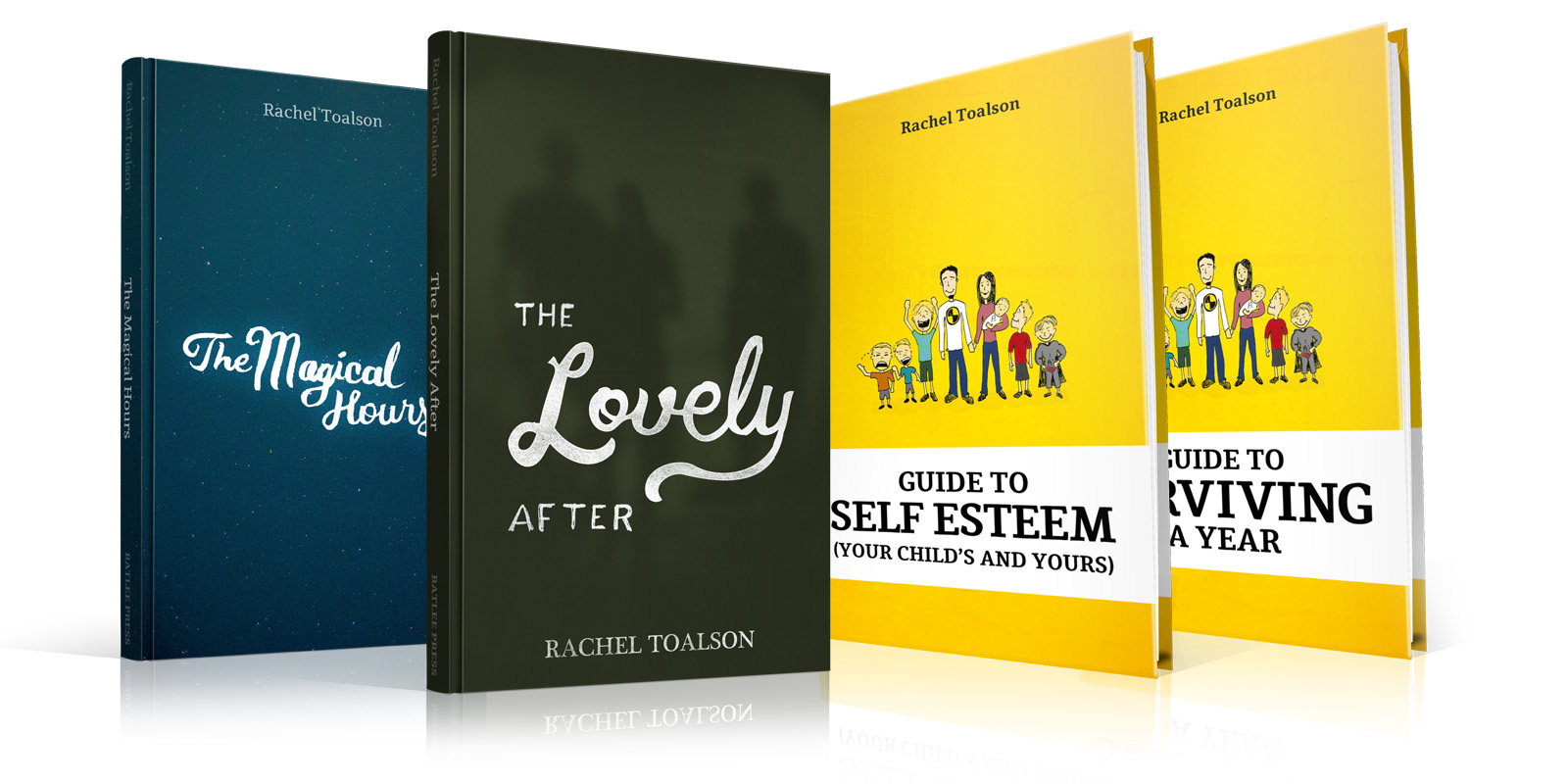
by Rachel Toalson | Books
Here are five things worth sharing this month:
1. Reading: I recently finished the middle grade historical novel, Brother’s Keeper, by Julie Lee. It’s about two North Korean kids who flee their part of the country for Busan in South Korea to escape the war between the north and south. They have to walk hundreds of miles in the winter. The book is heart-breaking and beautiful and haunting. Don’t miss it!
2. Reading: I absolutely LOVED Natalie Lloyd’s latest book, Hummingbird, about a girl with brittle bone disease who convinces her parents she wants to go to public school so she can find her forever best friend. You will fall in love with the main character, Olive, who is full of positivity and joy kabooms and love for her fellow students. It was sweet and heartbreaking and funny and so lovely; my kids are getting tired of hearing me talk about it. This is the first book of Lloyd’s I’ve read, but now I also have her books, The Key to Extraordinary, A Snicker of Magic, and the Problim Children series on my to-be-read list!
3. Watching: Lately I’ve been watching through My Next Guest Needs No Introduction, with David Letterman. I find the guests (so far I’ve watched Barack Obama, George Clooney, Malala Yousafzai, Jay-Z, Tina Fey, and Howard Stern) to be SO inspirational. There’s always some nugget of truth I can take and apply to my own life. And David Letterman is the perfect host. Check it out if you want to be inspired!
4. Reading: If you’re looking for a delightful young adult read, look no further than Carolyn Mackler’s The Earth, My Butt, and Other Big Round Things. It’s funny, it’s fun, it deals with deep topics, and it’s pitched perfectly for young adult readers. It was published several years ago, but Mackler republished it in 2018, along with the release of the sequel, The Universe is Expanding, and So Am I, which I’m reading right now (and it’s just as good as the first one). Mackler has written a collection of other books, all of which are now on my TBR list, because I love her work so much.
5. Reading: While on vacation with my family, I sped through Ethan Kross’s The Voice in Our Head, Why It Matters, and How to Harness It. What an eye-opening book. We all live our lives with a voice in our heads (sometimes multiple voices, and for some of us those voices are VERY loud and not all that nice). Kross provides scientific and situational evidence about this voice and how we can use it to our advantage. I found it enlightening and encouraging.

by Rachel Toalson | Wing Chair Musings
Be your magnificent self.
That’s the tagline I chose for my newest middle grade book, The First Magnificent Summer, which releases this month.
Be your magnificent self.
It’s a great message, isn’t it? Especially for kids. I hope every kid in the universe knows they’re magnificent. Just because they’re themselves.
But I know not every kid does.
I’m one of them.
That’s not a typo. I didn’t mean to say I was one of them. I still am one of them. I know I’m not a kid. But the kid who failed to believe she was magnificent, who filtered most of her life through the lens of “I’m not good enough, I will never be good enough,” still lives in me. She’s a big part of me. I’ve only just begun the work of assuring her she was always magnificent. Assurance and deep-down belief are miles away from each other, and it is hard work crossing the chasm.
In a recent therapy session, I told my therapist that I’m tired of feeling like no matter what I do or achieve in my life, it’s still not enough. I told her it made me uncomfortable to have a reporter come into my home and ask me questions and write a story because it left me so exposed and known. And I told her when I’m exposed and known my anxiety and depression and OCD explode into action.
“Why do you think that is?” She said.
“Because I know if people get too close to me, they’ll see my darkest parts,” I said.
“And what happens then?” she said.
“They’ll leave me.”
And there it was: the crux of the problem.
When I was eleven years old, my parents divorced. My dad left entirely. From what I remember, we had only spotty contact for the first two years, a couple of summers when he took us to Ohio, and then he dropped off the face of the planet. He didn’t come to my high school graduation, where I delivered my valedictorian speech; or my college graduation, where I walked with honor cords around my neck; or my wedding or the births of my children.
Nearly my whole life was spent under the shadow of his leaving, looking through the lens of “I must have done something to drive him away. To keep him away.”
Who knows you better than your parents, when you’re a kid?
Be your magnificent self? My “magnificent self” had driven away one of the most important people in my life. My “magnificent self” was too much—too emotional, too anxious, too extra, too everything, too whiny, too sarcastic, too loud, too silent, too in love with writing. I needed to be someone different.
I wrote about this in The First Magnificent Summer. I wrote about the small hurts and the big ones. I wrote about the breaking in two. I wrote about disappointments and dreams and everything between the two.
I wrote a better ending.
And thought I was done.
“Be your magnificent self,” I wrote in the author’s note. “You deserve to be loved just because you’re you.”
And still I couldn’t fully believe it, as evidenced by the discomfort and terror of attention.
“You wrote all your hopes into the book,” my therapist said. “And now you need to absorb them as your truth, like you hope the kids who read it do.”
They’re wise words.
So the first thing I say to the 12-year-old girl in me every morning is “You are magnificent.”
Because she has to believe that first.
Recently I came across something the Indian scholar and activist Manabi Bandyopadhyay said: “Be yourself, the world will adjust.”
But the truth is, the world doesn’t always adjust. Dads don’t always come back home or say they’re sorry. Friends don’t always admit they were vicious and jealous and it had nothing to do with you (and also everything to do with you). The people in our lives don’t always accept our neurodiversities or quirks.
But if the whole world doesn’t adjust, that doesn’t mean we have to. It just means we may have to adjust our expectations—and maybe stop looking for our worth and acceptance in other people.
I believe 12-year-old Rachel was magnificent. I wish she had believed it all those years ago.
But I think we’re getting somewhere now.
I know this was a hugely personal email. But I hope you’ve found some value in it and that it helps you remember that we are all deserving of love (it deserves repeating) just because we’re us.
Have a magnificent month of being your magnificent self.
Strategies to help you believe in your magnificent self:
1. Draw a scale
Whenever I talk about how I feel like a bad mom, my therapist encourages me to create a scale from “best mom” to “worst mom ever.” On the top is the mom who never yells or gets frustrated or wishes she could have a break from her kids (I’m not her). On the bottom is the most neglectful, spiteful, unkind mother I can imagine (which I’m also not). I fall somewhere in the middle, which instead of labeling “enough” I’ve named “magnificent.” Do the same for whatever you’re struggling with—parent, friend, employee, human being. My guess is you’ll fall somewhere in the middle, too, which is magnificent.
2. The word cloud
Grab a piece of paper. Write your name in the middle and circle it. Now create a word cloud for all the things that make you you. (Mine would have things like, loves to write, finds life in reading, hates clutter, needs space, doesn’t like loud noises, enjoys sarcasm, dislikes talking about Minecraft endlessly, prefers staying home, etc.) At the bottom of the page, write the sentence, “I am magnificent, because…” and finish the sentence. Hang the paper where you can see it or put it in a safe place where you can refer to it easily.
3. Seek therapy
Sometimes it takes a licensed therapist to peel away layers of misbeliefs we’ve had since we were kids. I know we’re pressed for time and money (and honestly I think mental health care should be free for all), but this is important work. And we never regret the important work of healing.

by Rachel Toalson | This Writer Life
One of the most frequent questions I get from young writers and even seasoned writers is: How many drafts do you need to write a story?
I have a super helpful answer:
It depends.
Let me explain. Some of my books only took four or so drafts. (Even saying “only four” will probably freak some people out—you have to really love and care about a book to read it four times!) Some have taken seven or eight. A couple have taken more than ten.
Really, it depends on the story.
My book that publishes May 30 (The First Magnificent Summer) took so many drafts I never thought I’d be finished with it. The first draft I wrote in prose. The second draft I turned into poetry. Third draft back to prose, fourth draft poetry, with a little humor, fifth draft back to prose with some more humor, sixth draft diary entries with more humor. This format stuck for the next three drafts.
Yes, three. It turns out humor is really difficult to get right, if you’re as picky as I am about humor.
For the seventh draft, I layered in more humor. In the eighth draft I added some poetic asides; in the ninth draft I rearranged some things, cut the first five thousand words, and meticulously examined the humor to avoid cliches and old tired metaphors. In the tenth draft I tightened up pacing, shortened most of the journal entries (adding more in one day if they felt too long) and added more humorous asides.
Finally, on the eleventh draft, I focused on language, word choice, and typos. And this is before the manuscript even sold to an editor!
Writing is a lot.
Compare all of that, however, to the book’s sequel (The Second Magnificent Summer, which will publish in summer 2024). I brainstormed, wrote a first draft, a second draft to tighten pacing and layer in more humor, and then it was off to my editor.
Part of this is that some stories are easier to tell than others (sequels and subsequent books can be easier because you’ve already spent so much time with the characters and know them so well). Another part of it is the more we write, the better we get at it (although this doesn’t always translate to fewer drafts, especially when getting better at what we do also means getting better at recognizing the flaws in our manuscripts).
So how do we know how many drafts a story needs, if it depends?
The answer to that is we have to get really honest with ourselves about the state of our manuscript.
As writers, we generally know when something is finished and when it’s not quite there. Sometimes it’s a little tricky to determine, but there’s usually a sense of unease in our gut if there’s still work to be done on a book or composition.
But here are some more practical ways to know if your writing composition needs more drafts.
1. It’s a first draft.
I know this seems like an obvious statement, but many of the young writers I meet wonder if a first draft, in some cases, can be the draft. And I don’t like speaking in absolutes, but I have strong feelings about this. I don’t personally think anybody can write their best book (or their best anything, really) in one draft—even those seasoned writers who claim they write their books in one draft. Nothing comes out perfectly the first time. Our first drafts are places to explore our stories and characters. Our second, third, fourth (okay, it can just be a second if you’re going to fight me on this) drafts are the places where we analyze, tighten, and perfect everything.
2. There are still places where you’re shaky on details.
These details could be plot points or character personalities or even the beginnings and endings of chapters. Reaching the end of a book you’ve written should leave you with a solid grasp of your plot, your characters, your structure, your word choice, your title, your settings, etc. If there’s any question in your mind (Does her sarcasm come through? Did I end chapter three in a place where people would want to read more? Does his motivation make sense in light of his actions? Have I said what needs saying in an understandable way?) it could be worthwhile to give it another draft.
3. You have an unshakeable feeling that something’s not quite right.
This is, honestly, one of my least favorite ways to figure out a story needs another draft—because many times it’s something you, as a writer, just can’t put your finger on. You just know there’s something. That the book needs more drafts. This is where it’s helpful to engage other readers—writer friends, or if you’re fortunate enough to have one, an agent who doesn’t mind reading a draft. Sometimes the perspective of another trusted person can lead you to the exact solution the next draft needs to get your story (or whatever you’re writing) in publishable shape.
I hope some of these suggestions are helpful to you. I’d love to know some ways you know when a draft is finished.
I’ll leave you with two very important questions I ask myself anytime I write something—whether it’s a piece of marketing content, a newsletter, a short story, a poem, or a 65,000-word novel:
What do I want to say?
Have I said it?
Have a fantastic month of writing and revising!

by Rachel Toalson | Books
Here are six things worth sharing this week:
1. Reading: Have you read Rob Harrell’s book, Wink? It’s SO GOOD! Harrell is the author of the Life of Zarf series, which I have not read. But I picked up his book, Wink, because someone mentioned it to me as a great humorous read. It was so much more than that! It’s a novel based on Harrell’s experience with a rare eye cancer, and it will have you laughing and crying at all the right places. Highly recommended!
2. Reading: I recently finished We Deserve Monuments, by Jas Hammonds, a young adult novel about racial violence and the generational results of it. I loved this book so much. And so did many people, apparently, since the book was a 2023 Coretta Scott King John Steptoe Award for New Talent Winner as well as a Kirkus Best Books, a School and Library Journal Best Book, A B&N Best Book, and a Parents Magazine Best Book of 2022. If you haven’t read it, put it on your list!
3. Watching: Husband and I are watching the third season of Apple TV’s Ted Lasso, a series about an American coach who moves to England to coach soccer (or what they call football). I’ve loved every season of this show. Ted Lasso is wise and witty and optimistic. It’s so funny and heartfelt and cheesy in some places and really funny that you’ll find yourself looking forward to your Friday night dates with the smart TV. I mean…hypothetically speaking. WATCH IT!
4. Reading: I adore some good nonfiction, and I just finished a book that definitely qualifies: Robin Wall Kimmerer’s Gathering Moss: a Natural and Cultural History of Mosses. It sounds like a heavy read, but Kimmerer is a fantastic writer. She writes her nonfiction so it reads like memoir or fiction, even. I first discovered Kimmerer when I read her book Braiding Sweetgrass: Indigenous Wisdom, Scientific Knowledge and the Teaching of Plants (which I also highly recommend), and I was hooked. Gathering Moss is a science book that will have you riveted, ready to learn more, and looking for the mosses in your environment, hoping they’ll tell you a story, too.
5. Reading: On some early-morning (very dark) runs, I read the audiobook of Lora Senf’s The Clackity, a middle grade horror novel. (I don’t know why I do this to myself; I was jumping at every little sound during the reading.) It’s so good. Frightening but full of heart. This is Senf’s first book, but she has another coming October 17: The Nighthouse Keeper. It’s definitely on my list (although I don’t think I’ll be reading it during dark runs!)!
6. Reading: I’ve loved Traci Chee since I read her young adult book, We Are Not Free, which published in 2020 and was a Printz Honor book. Well, I recently finished her latest YA book, A Thousand Steps Into the Night, which is completely different from the historical We Are Not Free but is no less engaging, entertaining, and enchanting. This one’s a fantasy that reads like a fairy tale. I read it while running around Hourglass Lake at Disney World with my kids—which could have increased the magic of the words. But no. Chee is a master. Highly recommend this book—which was long-listed for the National Book Award!

by Rachel Toalson | Wing Chair Musings
When I was a kid, I enjoyed being a leader.
What that meant at the time was that teachers looked to me to be an example for other students. Friends came to me for advice, because they (mistakenly) believed I had some inner wisdom they didn’t have (I had strong opinions and read a lot, which made me an expert in my own and apparently my peers’ eyes). I kept my brother and sister out of trouble (or tried to) while my mom worked multiple jobs to put food on the table.
In college, I ran the university newspaper as editor in chief, acted as the leader of a band, and organized multiple social groups. But into adulthood, those leadership roles began to slip away.
It seemed much easier to be a leader when I was younger.
I don’t consider myself a natural leader. Even when I was younger, I stepped into roles only because there were great, gaping holes that seemed important to fill. I stepped into them because no one else would.
But my life today is filled with amazing, competent leaders. And, I don’t know. Maybe I’m tired. I have a lot of kids. I live every day as a leader—a mom…and my kids’ lives aren’t getting any less complicated, and their problems aren’t getting any less challenging.
Maybe that’s enough for me, I told myself. To be a leader of this one, tiny world.
But it wasn’t. I could feel it down deep—that aching to make a difference, that longing to change the world that I’ve felt since I was a child.
After watching through Mrs. America, a Hulu original series that follows the women’s movement to push for the ratification of the Equal Rights Amendment (highly recommended, if you haven’t seen it!), I spent months obsessed with learning more about Gloria Steinem, one of the movement’s leaders. I felt a strong connection with Steinem, who spoke up for women’s rights, wrote endlessly about their importance, and founded a pivotal magazine, Ms.
Her story—and the stories of all the other women leaders—were so inspiring. But I could never be them.
I believe in the ERA. But if I had lived back during that time, when women were fighting for it, would I have been a Gloria Steinem or a Betty Friedan or a Bella Abzug or a Pauli Murray or a Shirley Chisholm or a Gloria Watkins? Probably not. (Maybe I could have been an Audre Lorde.)
I’m not comfortable in the spotlight. Public speaking makes me uncomfortable, unless I’m talking to kids and teens. When I used to sing the national anthem for sporting events—in middle school, high school and college—I hid behind a curtain or up in an announcer’s booth so no one would look at me while I was singing (except for the college baseball games, which left me vulnerable at home plate…I only did three of those, because my anxiety couldn’t take it).
And then an episode of the show highlighted a group of women athletes who in 1977 organized a 2,612-mile relay from Seneca Falls, New York, where the first national women’s convention was held in 1848, to Houston, Texas, where the pivotal National Women’s Conference was happening, and I told my husband: That would have been me.
They didn’t say a word. They ran. And their voice was heard.
Here’s the thing. We often mistakenly believe that in order to make a difference in the world, we have to be a loud leader, in the spotlight often, with millions of followers. But some of us are quiet leaders. Some of us lead by example. Or we lead by arranging careful words on a page and occasionally (or often) sending them out into the world. Or we lead by expressing our creativity and our hearts in music or dance or film or sport or marketing or science or math or interior design or fashion or engineering or food service or the millions of other possibilities that exist.
We do what we can with what we have. Some of us have legs to run. Some of us have voices to speak. Some of us have a marvelous gift for creating communities. Some of us like to be alone.
We’re all leaders, whether loud or quiet. Whether large or small or young or old. Whether we want to be one or not. Someone somewhere is looking at us as a leader to follow.
So the question is not Will we be a leader but What kind of leader will we be?
A. Breeze Harper, an American critical race feminist and author, says, “No one is on the sidelines; by our actions or inactions, by our caring or indifference, we are either part of the problem or part of the solution.”
I want to be part of the solution. I want to act and speak up and make change—in my own way. I don’t want to be indifferent; I want to care. I want to help repair the broken places in the world.
I think, at the heart of us, we all do.
So now the question(s) becomes, How will you use your one, unique voice to make a difference? To lead the world into a better tomorrow? To repair hearts and minds and whole lives?
I can’t wait to see.
I hope you have a lovely month of surprising opportunities to lead.






